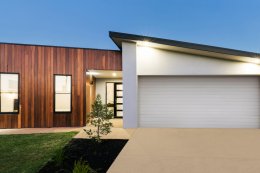
While there may be some small reprieve in the cost-of-living crisis with inflation slowing down, there are still many Australians doing it tough to cut back on their everyday expenses. According to the latest research from Compare the Market, as many as two in five Aussies have cut back on spending at the grocery store to afford other household bills, in the three months to July 2023*.
This is on top of 62.5% of respondents stating that they cut back on eating out and getting takeaway to have a bit more money to spare for bills.
Perhaps the most alarming stat that comes out of the research is that 17.7% of those who are cutting back at the checkout are doing so by skipping meals. This is a dramatic increase from the 9% who were skipping meals in July of 2022, while that number increased again to 15.8% in November last year.
And while all Australians are feeling the pinch, it’s Gen Z that are going hungry the most often, with as many as two in five ditching meals to save money. In almost similar levels, Gen Xers were also partial to skipping meals in order to pay their bills.
| Generation | % of people skipping meals to cut costs at the grocery store |
| Gen Z | 20.3% |
| Millennials | 16.4% |
| Gen X | 19.8% |
| Baby Boomers | 14.9% |
| Australian Average | 17.7% |
Besides skipping meals, some other common methods people are using to cut down the docket include planning cheaper meals (63.2%), looking harder for discounts (55.0%), reducing waste and using up items in the pantry (39.9%) as well as shopping at cheaper stores (34.9%).
Compare the Market spokesperson Phillip Portman said inflation across all segments of the household budget is contributing to Australians making drastic decisions, like skipping meals, to make ends meet.
“Unfortunately, for many Australians, it’s not just one bill that is climbing, but it’s almost everything from groceries and rent or mortgage repayments to energy prices and insurance premiums. And while some of the increase may be incremental, it’s the compounding effect of all these together that catches people out as they try to make their finances stretch even further,” Mr Portman said.
“It’s distressing to see the number of people skipping meals climb with each progressive survey we do. In the 12 months to July this year, we saw almost double the number of people skipping meals than the year prior. It’s especially concerning to see this sort of behaviour rise, as extended periods of skipping meals could potentially lead to nutritional deficiencies, which may cost even more to fix in the long run.
“Before people think to skip out on their next meal to save money, it may prove fruitful to see where other savings could be made.
“For example, people may forget that they can shop around for their electricity and gas plans. If it’s been more than a year since you’ve compared plans, you could be paying more than you need to for the same energy supply.
“Another way people could make some meaningful savings is by shopping around for their fuel. Rather than filling up at your regular, use fuel comparison apps to see if you can find cheaper fuel at a nearby location. There’s instances where the price of petrol varied by up to 40 cents a litre within the same suburb!”
Mr Portman also encouraged people to review their current insurance policies to see if there is a better-suited policy at a cheaper price.
“Another option people could consider is reviewing their insurance policies that may come up for renewal, whether that be home and contents, car or even health insurance, and compare new policies to see how they stack up. We’ve seen some of our customers find significant savings of over $1,000 for their home and contents insurance policy, or up to $400 for their car insurance.”
*Compare the Market surveyed 1,004 Australians aged 18 and over in July 2023.
^ Savings claims for home and contents insurance were for a brick veneer, cement tiled home insured for $534,600 and contents insured for $93,700 both with $500 excess in Victoria. Savings claims for car insurance were based on a 2019 Toyota Corolla in NSW.
-ENDS-
For interviews and more information, please contact:
Noémi Hadnagy | m: 0433 377 252 | e: [email protected]
Compare the Market is a comparison service that takes the hard work out of shopping around. We make it Simples for Australians to quickly and easily compare and buy insurance, energy, and home loans products from a range of providers. Our easy-to-use comparison tool helps you look for a range of products that may suit your needs and benefit your back pocket.








